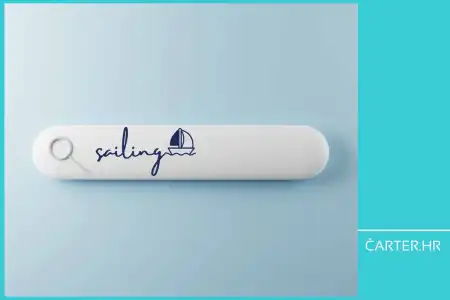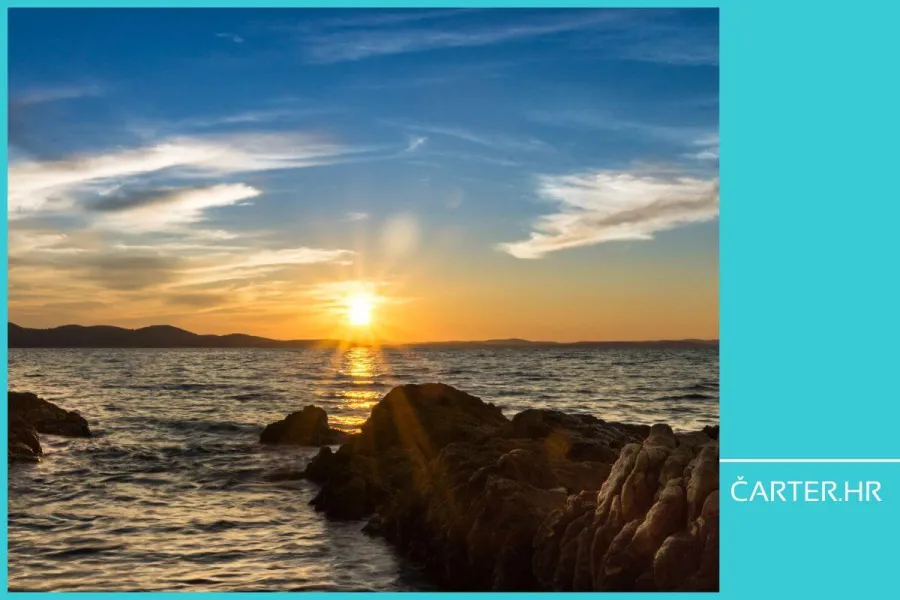
- 05.11.2024.
- News, Technology, Finances
Croatia has an exceptional potential for using solar energy as the main renewable source. Given the exceptional insolation and favourable geographical position, especially in Dalmatia and the Adriatic, solar energy can increase energy security and ensure financial savings. Despite this, there are numerous bureaucratic obstacles and challenges.
Croatia is increasingly turning to renewable energy sources, and solar energy is becoming a key element in this transition.
In addition to the fact that no normal person has anything against reducing CO2 emissions and nitrate oxides, which are particularly dangerous for human health - which are written about less but are more fatal - one big motivation is cost savings.
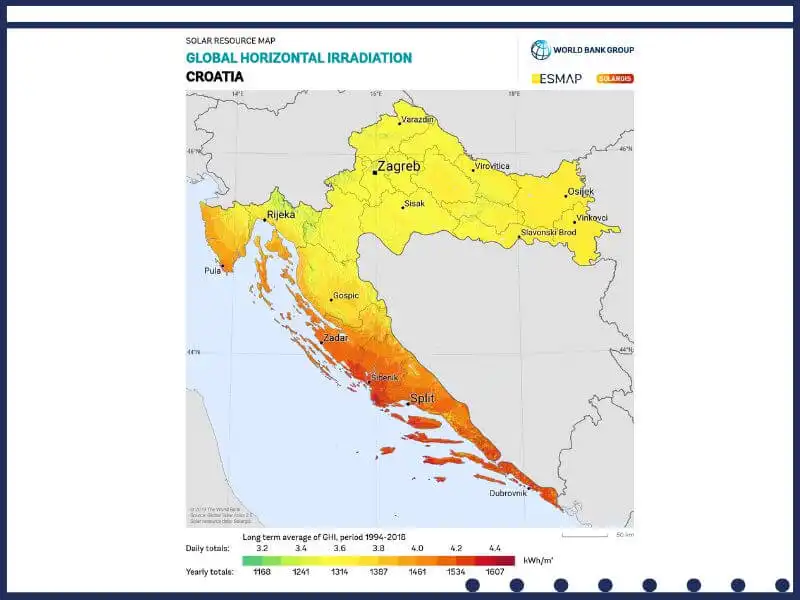
Energy (in)dependence of Croatia
Lijepa Naša belongs to highly decarbonized countries, but only when it comes to electricity production - 80%, which can be attributed primarily to the high share of electricity obtained from hydroelectric power plants.
On the other hand, only 30% of energy consumption comes from renewable sources. Therefore, in addition to the goals at the EU level for a greater role of such electricity in consumption, there is a great possibility of improving energy independence precisely through small and medium-sized photovoltaic power plants.
Croatia has one important basis for achieving the goal in the medium term, and that is, compared to the continental part of the EU, 1/3 more insolation, that is, the amount of energy from the sun's rays that reach it.
Croatia's sunny zone - Dalmatia, Istria, and the islands of the northern Adriatic
Dalmatia, Istria, and the islands of the northern Adriatic have a high level of insolation, which allows them an average of 2,700 to 3,000 sunny hours per year.
Daily amount of insolation 4.5 to 6 kWh/m²/day in Split, Dubrovnik, and Zadar enjoy a high level of insolation, which is a high level in the world.
In addition to savings in business, an important reason for increasing the capacity for electricity production from renewable sources is the highest possible level of energy independence and sustainability of the system.
We remember that on June 21, 2024, Dalmatia experienced something that has not happened for tens of years, which is the interruption of the electricity supply, because due to the overloading of the system, it turned itself off to prevent destruction.
The problem was solved within the same day, and due to better coordination with other regional electricity distributors, such a situation did not happen again. Considering that in the season the need for energy increases significantly, enough energy was constantly available throughout the summer in such a way that the available amount was replaced by imports from neighbouring countries.
And that import was not small, as can be seen in the graph:
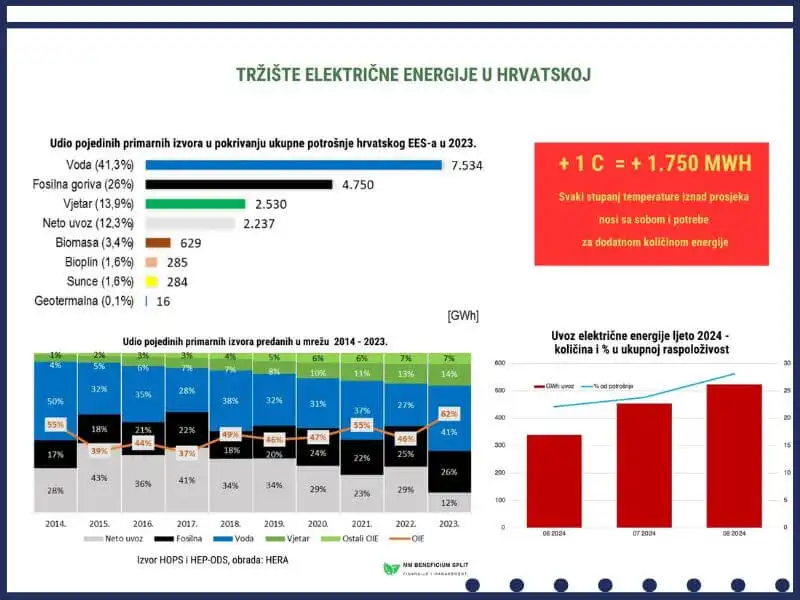
Importing electricity – an expensive compromise
Expressed in monetary terms, together with all accompanying costs, the value of electricity imports in the period 01.06. - 31.08.2024. is around 289 million euros.
Due to the availability of the system, it is impossible to avoid the need for imports, but it is possible to try to do everything to minimise it.
By increasing the number of solar power plants that produce for their own needs, a triple benefit is achieved:
- the possibility of supply interruption is reduced
- transmission losses are minimized
- there is no outflow of money from Croatia
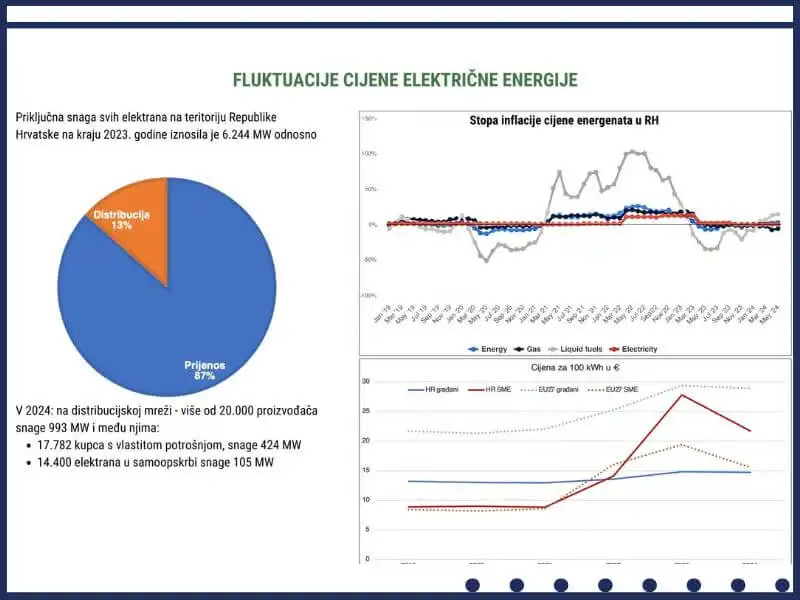
How much does it cost?
Depending on the quality of the installed equipment—and it is recommended not to install just some random panel because the shortest warranty period for individual parts of the system is 5 years—per installed kW of power, the investment is priced at 500 to 650 euros.
Furthermore, even according to the current electricity prices, which are more expensive for individuals and even more expensive for legal entities, this is a very logical move because the investment is paid back in less than 5 years, and the circuit remains.
Moreover, for much larger installed photovoltaic systems—we are talking about 100 kW of installed power and above—the payback period is 3 years, and that is if quality equipment is installed.
This is also confirmed by the calculation of savings per kW, which amounts to 210 euros.
How can we achieve this if we do not have the necessary money to invest in the set?
There is a financing model for such schemes that does not require the real estate to be pledged but of course requires creditworthiness and a high-quality business plan. The credit that is obtained is repaid from the amount of savings per installation compared to previous consumption.
As with all other financing, existing legal entities participating in this investment should have a minimum of 25% of their own funds.
We should not ignore the possibility of subsidising the interest rate for the part of investments related to the green and digital transition. Practically, until recently, the amount was available from the funds of the National Recovery and Resilience Plan, which largely subsidised the amount of interest for loans for the installation of such power plants.
The only but huge obstacle to installing more power from a renewable solar energy source is—you guessed it—bureaucracy. There, we received objections from the European Commission that we should work in general on the deadlines for both applications and connections in the field because we have specific goals for 2023, both in terms of production and consumption.

Croatia's solar potential
The pressure has clearly borne fruit and should be continued - as of 2023, Croatia has installed a total of 462.5 MW of solar energy, with an additional 238.7 MW installed that year alone.
Solar capacity is growing at a rapid pace and is expected to reach 963 MW by 2025 if current trends continue.
According to analyses, Croatia has the potential to develop up to 7 GW of solar energy by 2030, which is more than the connected power of all installed power plants now.
It is estimated that the annual investments will amount to about one billion euros, half of which would be aimed at the construction of solar and wind power plants.
Solar tomorrow? It's time for action.
Solar energy is a main component of Croatia's sustainable future, as energy needs are growing. Given the increasing availability of technology and financial incentives, the moment is ideal for research and investment in solar systems.
This is where small solar projects will play an increasingly important role in the energy landscape of the country, and we will be happy to help you achieve savings on the one hand and make a positive contribution to the ecological picture on the other.
It is already a significant asset in the public's image.
Categories of trends
- News
- Sale
- Marketing
- SEO
- Web design
- Social media
- Technology
- Regulations
- Management
- Education
- Finances
- User experience
Newsletter
Sign up for the newsletter and receive the latest trends and tips straight to your inbox


